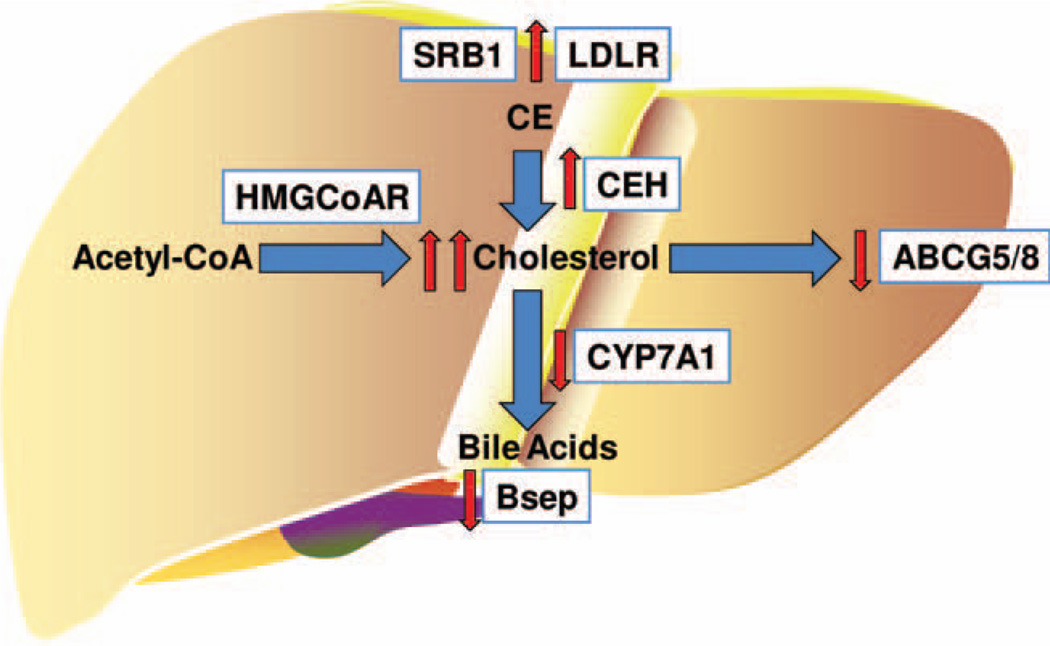Fig. 1.
Mechanisms of cholesterol homeostasis in the liver. De novo cholesterol synthesis from acetyl coenzyme A is rate-limited by HMG coenzyme A reductase (HMGCoAR). Dietary CEs are taken up by hepatocytes via several receptors, including scavenger receptor B1 (SRB1) and low-density lipoprotein receptor. CEs are hydrolyzed to cholesterol by CE hydrolase (CEH). Excess cholesterol is effluxed from hepatocytes into the bile canaliculi via adenosine triphosphate–binding cassette transporters G5 and G8 (ABCG5/8). Cholesterol is also catabolized to form bile acids via CYP enzymes (e.g., CYP7A1), which are secreted into the bile canaliculi via receptors such as the bile salt export pump (Bsep). The net effect of HFD feeding in foz/foz mice (red arrows) on these pathways favors accumulation of free cholesterol in hepatocytes.

